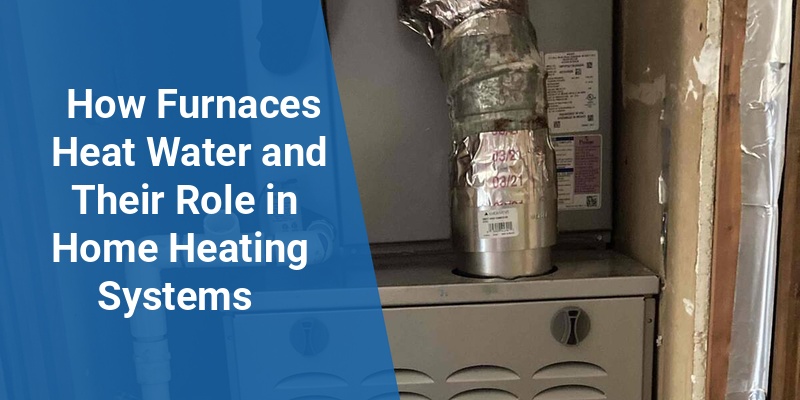Many homeowners often wonder whether a furnace heats water and how it integrates with their home’s heating system. Furnaces primarily heat air for warming residential spaces, but in some systems, they can also contribute to water heating. Understanding the relationship between furnaces and water heating systems helps homeowners optimize energy efficiency and maintain comfort. Below is a summary table highlighting the primary functions of a furnace compared to water heaters.
| Appliance | Primary Function | Heating Medium | Common Applications |
|---|---|---|---|
| Furnace | Heats air | Hot air | Space heating through ducts and vents |
| Water Heater | Heats water | Hot water | Domestic hot water for sinks, showers, appliances |
| Boiler | Heats water and distributes heat | Hot water or steam | Space heating and domestic water heating (in some cases) |
What Is a Furnace and How Does It Work?
A furnace is a mechanical device designed to heat air that is distributed throughout a building using ducts and vents. It typically burns natural gas, propane, oil, or uses electricity to generate heat. The furnace warms air in the heat exchanger, which is then pushed by a blower into the home’s ductwork. Furnaces are a key component of central heating systems in many American homes, ensuring consistent indoor temperatures during colder months.
Despite its efficiency in heating air, a furnace does not directly heat water. Its operation focuses solely on delivering warm air to living spaces and does not include components for heating or storing potable water.
Differences Between Furnaces and Water Heaters
Water heating in homes is usually handled by a separate appliance called a water heater. Water heaters are designed to raise the temperature of water and store it for household use such as bathing, cooking, and cleaning. There are several types of water heaters:
- Tank water heaters: Store hot water in an insulated tank.
- Tankless (on-demand) water heaters: Heat water instantly as it flows through the unit.
- Heat pump water heaters: Use electricity to transfer heat from the environment to water.
None of these appliances are the same as a furnace, but they may share some fuel sources (like natural gas or electricity). The **key difference** is that furnaces circulate heated air, while water heaters focus solely on warming and supplying hot water.
Can Furnaces Heat Water?
In most traditional residential heating setups, furnaces do not heat water. However, there are some exceptions and specific systems where a furnace-like unit heats water or contributes to heating water indirectly:
Boilers Versus Furnaces
Boilers are heating systems often confused with furnaces but serve a dual purpose. Boilers heat water and distribute either hot water or steam through pipes for space heating via radiators, baseboards, or radiant floor systems. Unlike furnaces, boilers provide heat using water as the medium instead of air. Some boilers also provide domestic hot water by using a coil inside the tank or through an indirect water heating system.
Call 888-906-9139 for Free Local HVAC Quotes – No Obligation, Just Savings!
Indirect Water Heating Systems
Certain home heating systems utilize a furnace to heat air for warming rooms and a connected indirect water heater to warm household water. In this setup, the furnace powers a hot water coil or heat exchanger to indirectly heat water. Although the furnace itself does not directly heat the water, it supports the process by generating heat that is transferred to the water heater.
Combination Systems
Some modern, high-efficiency systems combine space heating and water heating functions. These combination boilers (combi boilers) are more common outside the US but are gaining traction domestically. They supply hot water on demand while handling home heating duties simultaneously. These systems can be mistaken for furnaces but are distinct appliances offering integrated functionality.
How Your Home Can Efficiently Heat Water and Air
For homes with separate furnaces and water heaters, each system is optimized for its specific role:
- Furnace: Designed to maximize airflow and temperature control within the home.
- Water Heater: Built to efficiently maintain hot water supply for daily needs.
Combining these systems can offer efficiency benefits, but installation of indirect water heaters or combi boilers often requires professional assessment to suit the home’s size, climate, and fuel type.
Energy Efficiency Considerations
Using the right appliance for its intended purpose improves energy efficiency. Furnaces work best when optimized for air heating and combined with efficient water heaters, such as tankless systems, to reduce energy waste. Additionally, regular maintenance and upgrading older systems can greatly enhance performance and reduce utility bills.
Signs You May Have a Heating System That Also Warms Water
If you are unsure whether your furnace contributes to water heating, consider these indicators:
- Your system includes a boiler instead of a furnace, identified by hot water pipes or radiators rather than ductwork.
- You have an indirect water heater connected to your main heating system.
- Your heating appliance is labeled as a “combi boiler” or dual-purpose heater.
- You have a separate water heater tank or tankless water heater dedicated only to domestic water supply.
Understanding your home’s heating system setup can clarify the roles of each appliance and inform maintenance or upgrade decisions.
Call 888-906-9139 for Free Local HVAC Quotes – No Obligation, Just Savings!
Maintaining Furnaces and Water Heating Equipment
Whether your furnace and water heater are separate or integrated, regular maintenance is essential to ensure safety and efficiency. Recommended practices include:
- Annual professional inspections and tune-ups for furnaces and boilers.
- Flushing water heaters periodically to remove sediment buildup.
- Checking and replacing filters in furnaces to maintain airflow quality.
- Monitoring pilot lights or ignition systems to ensure proper operation.
Proper maintenance extends the lifespan of heating equipment and can prevent costly repairs.
